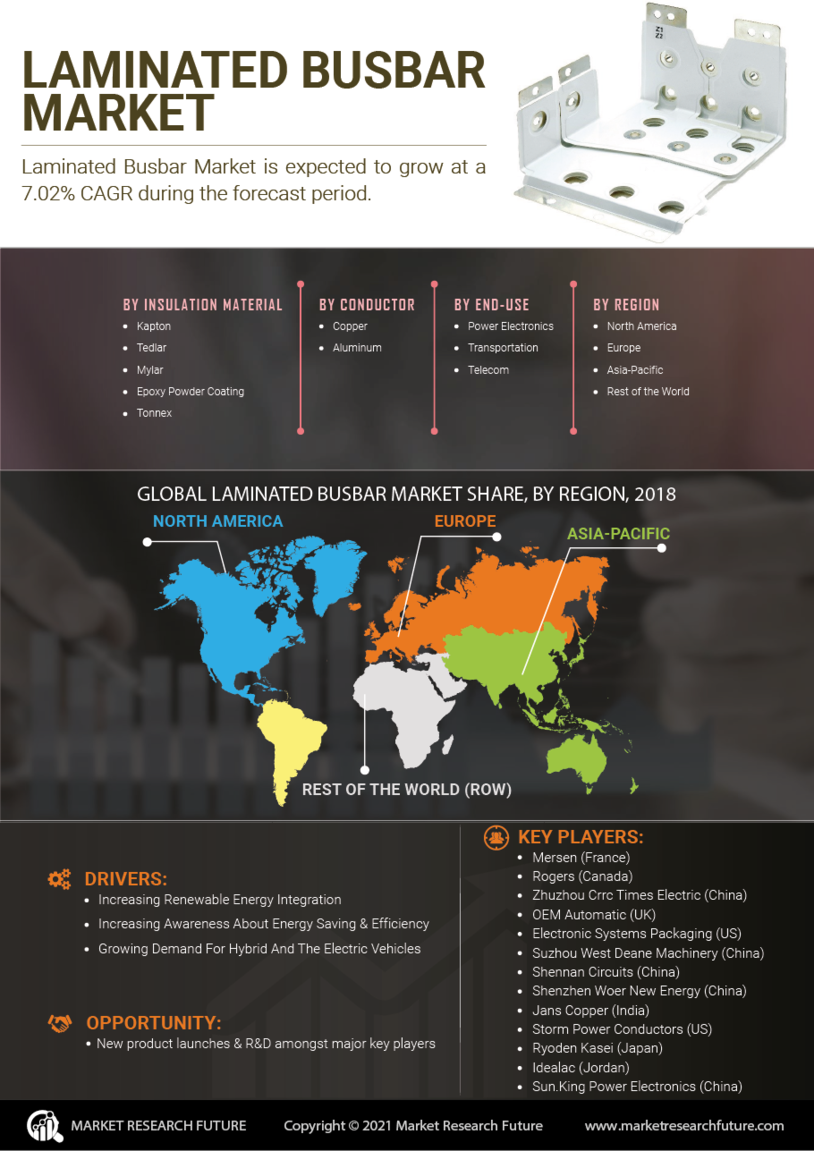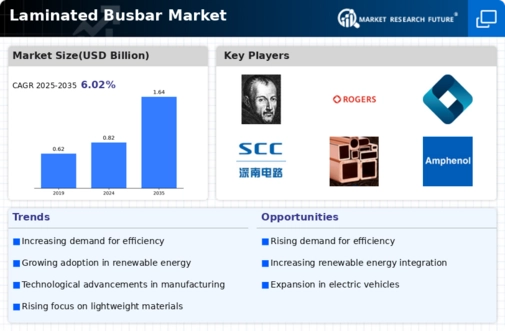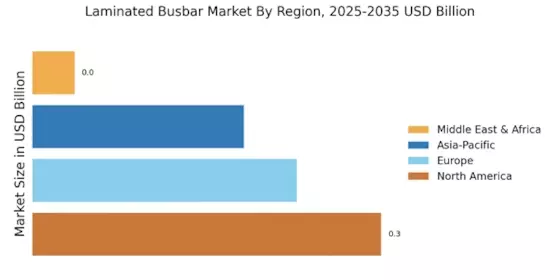Growth in Data Center Construction
The Laminated Busbar Market is benefiting from the rapid growth in data center construction. As the demand for cloud computing and data storage continues to rise, data centers require robust power distribution systems to manage their energy needs effectively. Laminated busbars are favored in these applications due to their compact design and high conductivity, which help in minimizing energy losses. The data center market is projected to grow significantly, with investments in infrastructure reaching substantial figures. This growth is likely to drive the demand for laminated busbars, as they are integral to ensuring efficient power distribution in these energy-intensive facilities.
Expansion of Electric Vehicle Infrastructure
The Laminated Busbar Market is poised for growth due to the rapid expansion of electric vehicle (EV) infrastructure. As governments and private sectors invest heavily in EV charging stations, the need for efficient power distribution systems becomes critical. Laminated busbars are increasingly utilized in EV charging stations due to their ability to handle high currents and reduce energy losses. The electric vehicle market is expected to witness exponential growth, with projections indicating that millions of EVs will be on the roads by the end of the decade. This trend suggests a corresponding increase in the demand for laminated busbars, as they play a vital role in ensuring the reliability and efficiency of EV charging solutions.
Advancements in Electrical Grid Modernization
The Laminated Busbar Market is influenced by advancements in electrical grid modernization. As utilities seek to enhance the reliability and efficiency of power distribution networks, laminated busbars are increasingly being adopted for their superior performance characteristics. The modernization of electrical grids involves integrating smart technologies and renewable energy sources, which necessitates efficient power management solutions. The global push towards smart grids is expected to result in substantial investments, potentially reaching hundreds of billions of dollars. This trend indicates a growing market for laminated busbars, as they are essential components in modernizing electrical infrastructure and improving overall grid performance.
Increasing Demand for Renewable Energy Solutions
The Laminated Busbar Market is experiencing a notable surge in demand due to the increasing focus on renewable energy solutions. As countries strive to meet their energy needs sustainably, the integration of solar and wind energy systems has become paramount. Laminated busbars, known for their efficiency in power distribution, are essential components in these renewable energy systems. The market for renewable energy is projected to grow significantly, with investments reaching trillions of dollars in the coming years. This growth is likely to drive the demand for laminated busbars, as they facilitate the efficient transfer of electricity generated from renewable sources, thereby enhancing the overall performance of energy systems.
Rising Industrial Automation and Electrification
The Laminated Busbar Market is experiencing growth driven by the rising trend of industrial automation and electrification. As industries increasingly adopt automated processes, the demand for reliable and efficient power distribution systems becomes critical. Laminated busbars are well-suited for industrial applications due to their ability to handle high currents and reduce energy losses. The industrial automation market is projected to grow significantly, with investments in automation technologies reaching substantial amounts. This growth suggests a corresponding increase in the demand for laminated busbars, as they are essential for ensuring efficient power distribution in automated industrial environments.


















Leave a Comment